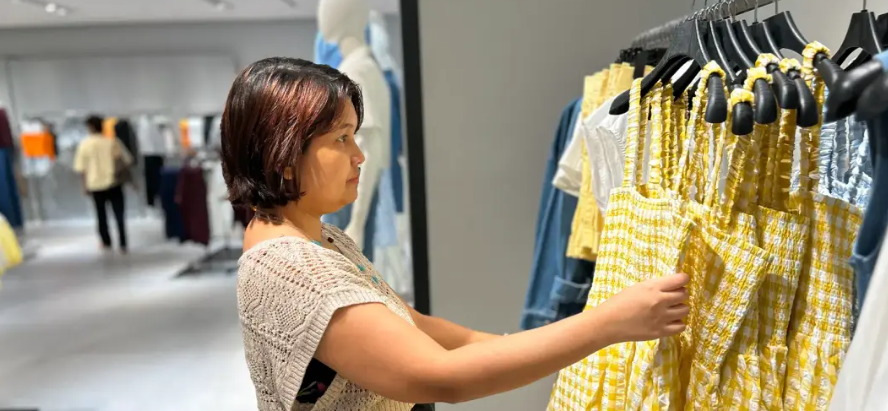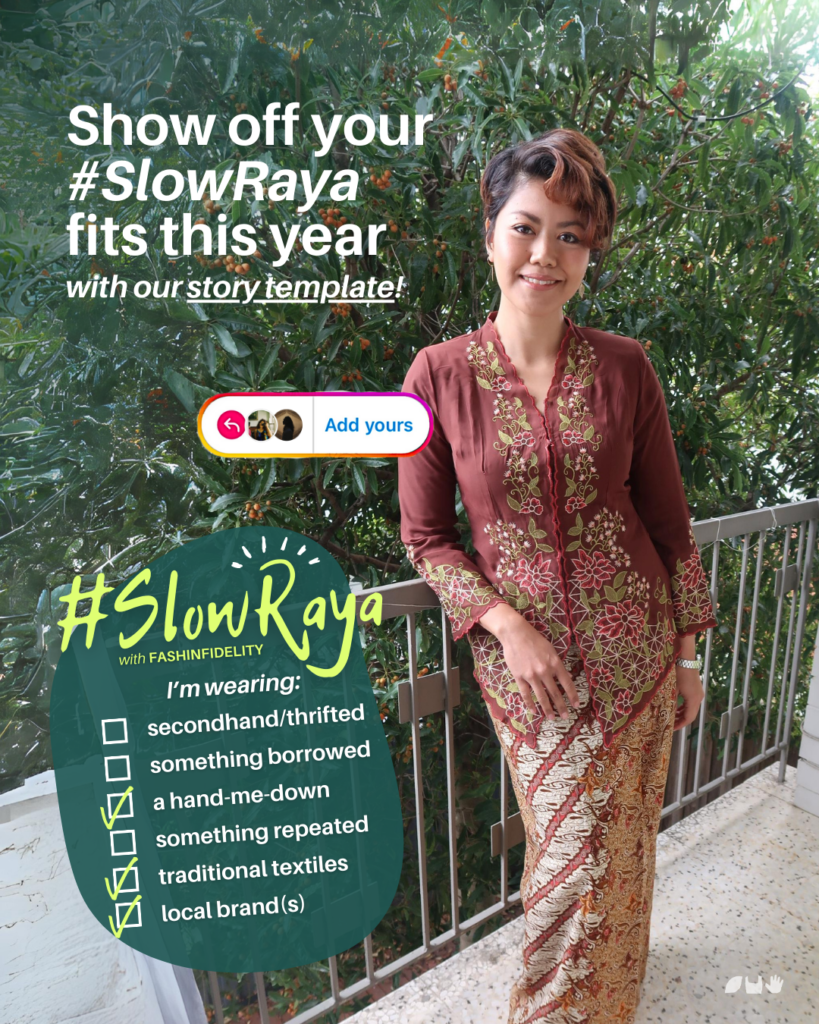1585 words; 7 min read
As a society, we should be ashamed of ourselves. We haven’t really tried very hard to reduce our impact of consuming fashion, because we don’t even know how they’re made.
We see so many companies claiming to manufacture ethically, or producing sustainable fashion. But let’s get back to basics. We can’t be buying into fashion trends or ethical fashion claims, when we don’t even understand how clothes are made. If we were all students in a classroom taking a test on what and who made our clothes, we would all fail – tremendously.
In the process of explaining my venture to many, many people – the Uber driver taking me to my destination, my high school friends, my ex-workmates, even my siblings, it’s clear that we are dumb about where our clothes come from.
There are so many levels of inputs into the supply chain of garment production, that we don’t seem to care or appreciate. We see something we like on a shelf or hanger, and if it fits well (arguably, sometimes it doesn’t fit well but it’s cheap enough), we snatch and pay – simple!
Inherently, all clothes carry an environmental footprint. Natural fibres are not always the better choice.
Consuming fashion should be easy
How do I choose better, then? Well, when it comes to choosing a piece of clothing from the shelves, consumers are driven by their own values. These are so deeply rooted and so varied in each individual, we can never gauge in which direction this decision could have its origins. We have to wear clothes, sure. This is not a fabric-shaming exercise. One fabric is not better than the other. But wouldn’t it be great if you knew some of this info at point of purchase?
What I am championing for, in this day and age, is that clothes are labeled for their environmental and social footprint. This is so that consumers can make a value-based decision that matches their own. We already do this – the food we eat based on the labels affixed on the can, or how it’s described in an upmarket restaurant’s menu. The furniture we buy because we know of its make and origins, and fall in love with its texture, grain, feel to touch. The drinks we avoid because we know of its sugar content. The cars we drive because we know of its emissions and where it’s assembled, and so forth.
For example, we are proud to announce our wines come from a certain region, that our cars are German, that our eggs are free-range, and that our dining table is jarrah or oak. But boasting about how much water my jeans consumed in the production process? Not that sexy, is it?But at least with a footprint label, you know. You can’t ‘un-know’ what you’ve been told. This may be a purely educational exercise, or it could actually influence purchasing decisions. What do you reckon? (I expand this idea further throughout the blog.)

The natural versus synthetic conundrum
The most common question I get when I dive into this topic is the fabric used. Ah, the old which fabric is greener conversation.
Are natural fibres (cotton, wool, silk) better than synthetics (acrylic, nylon, polyester)? Inherently, all clothes carry an environmental footprint. Natural fibres are not always the most ethical or sustainable choice. (While we’re on this topic, leather is not technically a fabric but a material.)
In terms of natural fibres, cotton is the thirstiest yarn on the planet, whereas bamboo and hemp are must faster-growing and is less resource-intensive. Cotton also relies heavily on pesticides and insecticides to ensure maximum yield for growers.
Synthetics mostly originate from the distillation of petroleum and carries with it the footprint of mining for oil, refining, and distribution which constitutes a big chunk of environmental impacts to air, land, and water.
What I am championing for, in this day and age, is that clothes are labelled for its environmental and social footprint.
– Najah Onn

There’s also rayon (viscose), modal, and lyocell, which the industry terms “regenerative” cellulose fibres. Unlike most man-made fibres, rayon, modal, and lyocell are not synthetic. They are made from cellulose, commonly derived from wood pulp, and more recently from bamboo. They are neither a truly synthetic fibre, in the sense of synthetics coming from petroleum, nor are they natural fibres, in the sense of processing fibres that are produced directly from plants or animals (such as wool.) However, their properties and characteristics are more similar to those of natural cellulosic fibres, such as cotton, flax (linen), hemp and jute, than those of thermoplastic, petroleum-based synthetic fibres such as nylon or polyester. More on this here.
Not all clothes are 100% of a certain fibre. We find cotton mixed with elastane, cotton silk blends, acrylic blended with wool, and polyester regularly mixed with other fibres. So your clothing footprint is all jumbled up!
Fabric is only one part of making clothes happen
What people often don’t think about is that the fabric selection is only one part of the garment manufacturing process. In a nutshell we have the following steps:
- Design / sketch / thinking about what you want, including specifications (instructions)
- Sourcing your materials (fabric, accessories, hardware) to match what you want
- Patterns, sampling and size grading
- Review your samples
- Prepare for mass production – includes ordering all your materials and fabrics, hot wash or preshrinking, dip dyeing, screen printing, digital printing, design and order your brand labels, swing tags, and clothing care labels
- Mass manufacturing and quality control
- Packing, shipping, dispatch
But hang on – even before we get to garment manufacturing, how did your fabric get there? Consider step (2) above, “sourcing your materials.” Your yarn did not come to a wholesaler’s office in rolls straight from an Uzbekistan cotton farm, or from a petroleum distillation refinery.
A big and dirty part of it, however
Yes, turning fibre into fashion is a dirty industry. This is where we focus our minds next: to the textile industry and its mills across the globe. The #textile industry is primarily concerned with the design and production of yarn, cloth, clothing, and their distribution. The raw material may be natural or synthetic using products of the chemical industry.
We tend to assume that fashion has moved into some high-tech zone, with garments produced by magic pollution-free processes, but it is far from it. Take natural fibres, for example. Turning white fluffy cotton bolls into fabric, washing the grease out of wool – often remains the back-breaking, pollution-riddled heavy industry it ever was. We might be fooled to think the process has now become ‘clean’, but the reality is, we just don’t see them – because it no longer happens in our backyard. Textile #mills are found in China, India, Italy, Germany, Bangladesh, and Pakistan. In over a hundred years, the essential process (and some of the chemicals) used in textile production really haven’t changed much.
As anti-pollution laws came into effect to protect First World inhabitants and resources (for example, the USA Federal Water Pollution Control Act 1972), the fashion industry, with its penchant for quick and cheap, switched its production game to parts of the world that are harder to monitor, and where they also often benefit from less stringent, or non-existent, legal controls.
Now I’m not saying all of textile production is bad, I’m saying most of them in Developing World countries probably wouldn’t meet your expectations if you were to visit one. After all, 90 percent of waste water in developing countries is discharged into streams and rivers without any treatment.
The truth is that, without a plethora of toxic substances or processes to choose from, your wardrobe wouldn’t be half as visually appealing or work so well on your bodies. With the exception of some pretty dire eco-fabrics (think jute and hemp – not everyone’s cup of tea), a fabric can’t go anywhere until it’s finished, least of all into your washing machine or even the open air, where it would disintegrate and drip dye all over your house.

We just need to start with existing measures first – the basics
With all that in mind, what has come of us – society at large, is that we’re first and foremost consumer of garments, and secondly (if applicable), religious trend follower of Fast Fashion. You probably know by now that Fast Fashion is not good for our planet. The resources it requires is putting extra pressure on our environment and people, in a negative way, while big corporations are only interested in making more profit for themselves by squeezing tight the cost of production – mainly in the form of wages and raw materials, and avoidance of compliance.
I don’t think we’re anywhere near solving all of Fast Fashion’s problems, or even any close at reversing the trend. But governments can regulate our factories better, right? And monitor compliance to standards? To treat wastewater prior to discharge? To install filters on our stacks? To make sure people who work in textile mills wear appropriate personal protective equipment? Are these new concepts to you? I doubt it. Once we do this, the cost of producing textiles will take into account the health of our rivers and the air we breathe, the health of our workers, the wellbeing of our societies and ecosystems. Then we can really go back to basics. Make clothes because we need and appreciate them; not because they are #trendy, according to Fast Fashion.
Perhaps it’s not really an insurmountable idea to live in a world where we intentionally purchase our necessities based on what works for our bodies. I’d like to imagine so.
Join us in our Slow Fashion movement with the hashtag #ConscientiousFashionista and #wardrobetruths on Instagram, and follow us at @fashinfidelity.
Tags: #wardrobetruths #lessonsinfashion #ethicalfashion #fastfashion #slowfashion #fashionisnolongertrendy #fashioneducation
References: Siegle, L. (2010) “To Die For – Is Fashion Wearing Out the World?”




